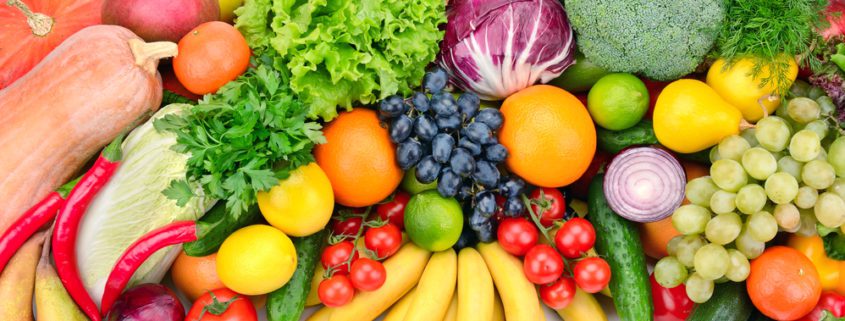MICROnutrients for Health Sake!
Every cell, tissue, organ and system in the body needs specific amounts of specific nutrients to function efficiently and effectively –not just the energy supplied by macronutrients (protein, fat and carbs). Micronutrients are necessary not only to form the components of our bodies, but also in the millions of chemical reactions that occur in our bodies at every moment. They provide the raw materials our bodies need for healing, detoxifying, and rebuilding itself.
Micronutrients are:
- Vitamins (from Latin vita meaning “essence of life” ): essential organic molecules needed in small amounts for normal function, growth and maintenance of body tissues. Fat-soluble vitamins (A, D, K and E) dissolve in fats and oils. Water-soluble (B vitamins and C) dissolve in water. This affects the way in which vitamins are absorbed and used in the body.
- Phytochemicals: naturally occurring chemical compounds in plants. These are vital for optimal health and disease prevention. There are thousands of phytochemicals. The more we get in our diet, the lower our risk of chronic disease.
- Minerals: chemical elements such as calcium, magnesium, potassium, iron that play vital roles including:
- Regulate tissue growth
- Facilitate the transfer of nutrients across cell membranes
- Maintain proper nerve conduction
- Provide structural (such as calcium for bones) and functional support
- Maintain the pH balance in the body
Micronutrient deficiencies are linked to a spectrum of problems such as:
- Iron deficiency anemia
- Greater susceptibility to infection (zinc deficiency leads to impaired immune function)
- Thyroid disorders ( iodine deficiency)
- Muscle weakness, bone loss (vitamin D deficiency)
- Vision problems (vitamin A deficiency leads to poor retina health)
What To Do?
- Eat real food
- Replace grains with vegetables (sweet potatoes, broccoli etc.). They contain up to 10x more vitamins and minerals than grains, and have high amounts of health-promoting phytochemicals. Every time vegetables take the place of grains in your diet you win.
- Add a handful of nuts per day: in granola, oatmeal, salad, grains, in pesto, nut butters on apple or veggie crudites
- Add herbs. Cilantro. Parsley. Mint. Rosemary. Basil…and more. The exceptional flavors, textures and shapes can make the simplest salad or sandwich a gourmet delight. They are rich in micronutrients. The flavor compounds in herbs are also powerful antioxidants. Even when used as a garnish, herbs can make an irreplaceable contribution to a dish: a whole sprig or chopped leaves arranged on an entrée or as an accent on a plate can enhance our appetite and create a harmonious mood
- Add spices. They are concentrated sources of micronutrients; the list of phytochemicals in spices in virtually endless
- Eat the rainbow in vegetables and fruits. The pigments that give plants their colors are phytochemicals. Eating many different colored vegetables and fruits is an easy way to get the full complement of nutrients plant foods provide. Eating two or three servings daily from each group = a superior micronutrient intake. Think of different color families of vegetables and fruits as their own individual food groups. Aim for 2 – 3 or each color family every meal, for a minimum of 8 – 10 servings daily. An easy way to do this is to have 2 servings at breakfast and 3 servings each at lunch and dinner.
Simply incorporating a different vegetable into a meal can be a great start to upping your nutrient game.
The goal is progress, not perfection. The imperfect plan you stick to is better than the perfect plan you quit. 😁












Leave a Reply
Want to join the discussion?Feel free to contribute!